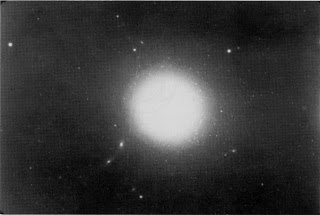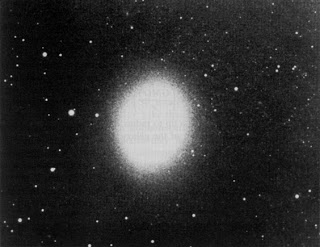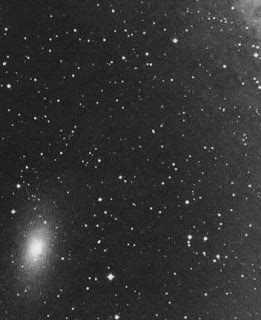Astronomy
Elliptical galaxies are usually found in the most violent places in the Universe, like at the heart of galaxy clusters and in compact groups of galaxies. In these places, elliptical galaxies have had an accelerated life, with many galaxy mergers and several periods of star formation. These constant mergers and collisions increased their size and used up all the gas available for star formation.






- 10 Satellites Of Milky Way Galaxy
10 Satellites Of Milky way Galaxy 1. Canis Major Dwarf ...
- Picture Of The Day - Nov 5
Picture Of The Day 2012 November , 5 ...
- Irregular Galaxy
Irregular Galaxy ...
- Picture Of The Day Oct - 25
Picture Of The Day October 25 , Thursday The Cone Nebula (NGC 2264) ...
- Galaxy
Picture Of The Day(Stars and Galaxies) Galaxy ...
Astronomy
Elliptical Galaxy
Elliptical Galaxy
Elliptical galaxies are also named because of their shapes. Elliptical galaxies range from circular (remember, a circle is an ellipse!) to long, narrow, and cigar-shaped.
Elliptical galaxies have a large range of sizes. The largest elliptical galaxies can be over a million light-years in diameter. The smallest "dwarf elliptical" galaxies are less than one-tenth the size of the Milky Way!
Elliptical galaxies are usually large, containing hundreds of millions to trillions of stars. The biggest galaxies in the Universe are elliptical galaxies. They?re the result of many collisions between smaller galaxies, and all these collisions have destroyed the delicate spiral structure that we see in our own galaxy. And they?re usually old. Elliptical galaxies look redder than spiral galaxies like the Milky Way. That?s because they contain old, red stars and have very low rates of star formation. All of the available gas and dust was already used up in the past, and now all that remains are these old red stars. They also have large populations of globular star clusters.
Elliptical galaxies are usually found in the most violent places in the Universe, like at the heart of galaxy clusters and in compact groups of galaxies. In these places, elliptical galaxies have had an accelerated life, with many galaxy mergers and several periods of star formation. These constant mergers and collisions increased their size and used up all the gas available for star formation.
Elliptical galaxies are sub-classified according to how flat they are. The number next to the ``E'' in the tuning fork diagram = 10×(largest diameter - smallest diameter) / (largest diameter), so an E7 galaxy is flatter than an E0 galaxy. The flattened shape is not due to rotational flattening but to how the orbits are oriented and the distribution of the star velocities. Most ellipticals are small and faint. The dwarf ellipticals may be the most common type of galaxy in the universe (or maybe the dwarf irregulars are). Examples of elliptical galaxies are M32 (an E2 dwarf elliptical next to the Andromeda Galaxy) and M87 (a huge elliptical in the center of the Virgo cluster).

E0 ( M87 In Virgo)

E1 (M105)

E2 (M32)

Between E3 and E5 (M59)

E6 (M110)

E7
- 10 Satellites Of Milky Way Galaxy
10 Satellites Of Milky way Galaxy 1. Canis Major Dwarf ...
- Picture Of The Day - Nov 5
Picture Of The Day 2012 November , 5 ...
- Irregular Galaxy
Irregular Galaxy ...
- Picture Of The Day Oct - 25
Picture Of The Day October 25 , Thursday The Cone Nebula (NGC 2264) ...
- Galaxy
Picture Of The Day(Stars and Galaxies) Galaxy ...
